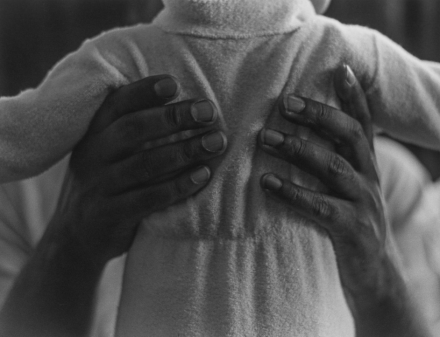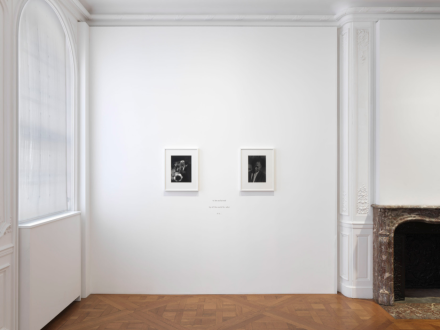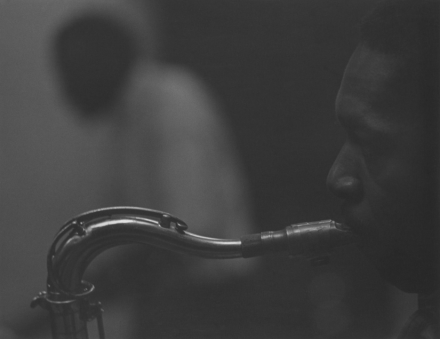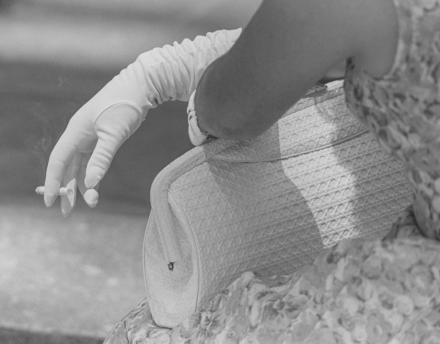
Roy DeCarava, Bill and Son (1962), via David Zwirner
Marking its first presentation of the work of photographer Roy DeCarava since announcing exclusive representation of his estate last year, David Zwirner has opened an impressive pair of shows devoted to divergent bodies of work. Exploring the artist’s expansive vision and unique sense of the image, the pair of shows highlight why Zwirner was so devoted to representing the artist’s work.

Roy DeCarava, the sound i saw (Installation View), via David Zwirner
Originally trained as a painter and draftsman, DeCarava began working with the camera in the mid-1940s, seeking an inclusive artistic statement for the culturally diverse uptown Manhattan neighborhood of his Harlem youth. Working without assistants and rejecting standard techniques of photographic manipulation, DeCarava honed his printing technique to produce rich tonal gradations, enabling him to explore a full spectrum of light and dark gray values more akin to a painterly mode of expression. Relying on ambient light and a point of view that neither monumentalizes nor sentimentalizes his subjects, he was able to produce a highly original oeuvre that carries significant visual and emotional meaning. The result are works that seem to glow, often focusing on moments of pause and single characters or small groups in motion, and allowing the natural gradations of light and the implications of movement, or lack thereof, to effect an impressive visual effect on the viewer. He shot like a painter, allowing washes and subtleties in tone to animate the space of the canvas, and his use of energetic, expressive poses for his figures make for a powerful counterpoint to his sensibilities with light and space.

Roy DeCarava, Coltrane and Elvin (1960), via David Zwirner
At the gallery’s uptown location, Zwirner presents a series of photographs from “the sound i saw,” DeCarava’s unwavering exploration of the relationship between the visual and the aural. Created between the mid-1940s and 1960 and first assembled as an artist book, it has never before been exhibited in its original form. This work delivers musicians, those known and unknown, including Ornette Coleman, John Coltrane, Duke Ellington, Billie Holiday, and others in their milieu, into a sound and a sense rarely seen in visual arts. These figures are glimpsed both mid-set and off-stage in moments of repose, emphasizing their status not as musical icons, but as people deeply engaged in the everyday process of living. In one, Billie Holiday smiles for the camera, while in another, a group of musicians wander off the stage, posed heroically as if returning from battle, and washed in a crystalline light that makes their stances on stage all the more commanding.

Roy DeCarava, White Glove and Cigarette (1962), via David Zwirner
By contrast, the gallery’s Chelsea show, “Light Break,” showcases a range of images that underscore DeCarava’s subtle mastery of tonal and spatial elements across a wide, fascinating array of subject matter: from the figural implications of smoke and debris to the shadows and accents of early mornings or late evenings. Each time, DeCarava’s work captures figures caught up in moments of powerful contrasts of light and dark, of movement and stillness, a space where the self can both extend itself out beyond the picture plane, even as the image itself seems frozen in a moment of placid eternity.
Approaching photography with a painterly aesthetic and leaving behind the standard practices of documentary photography, DeCarava’s work is a masterclass in the construction of the image.
Both shows close October 26th.
— D. Creahan
Read More:
Roy DeCarava: the sound i saw [Exhibition Site]
Roy DeCarava: Light Break [Exhibition Site]



